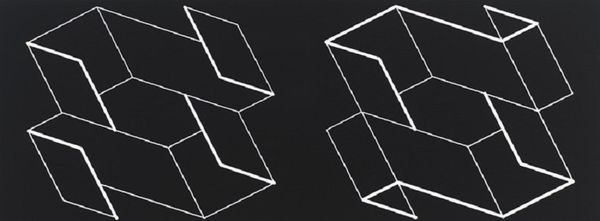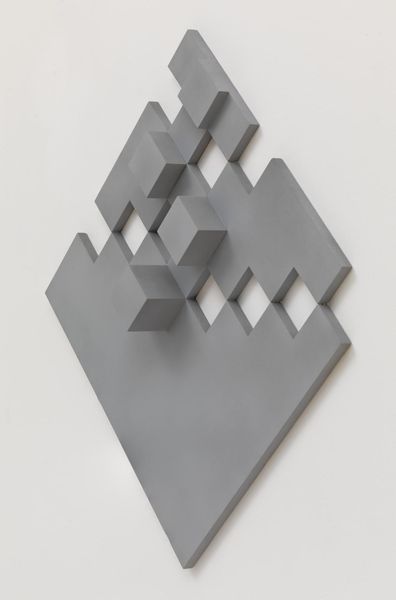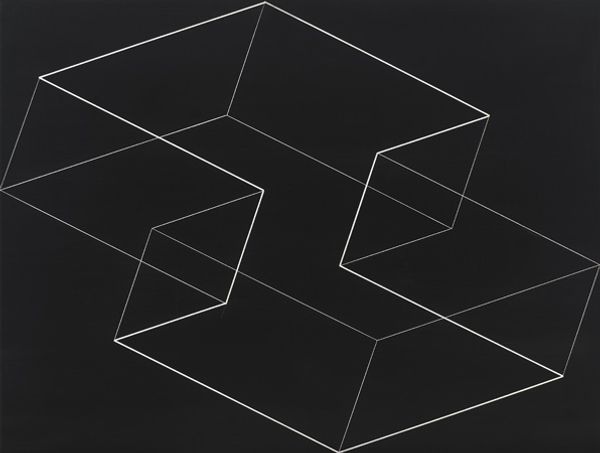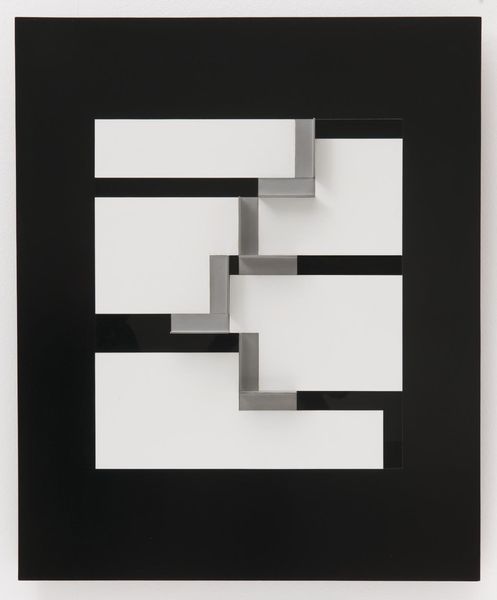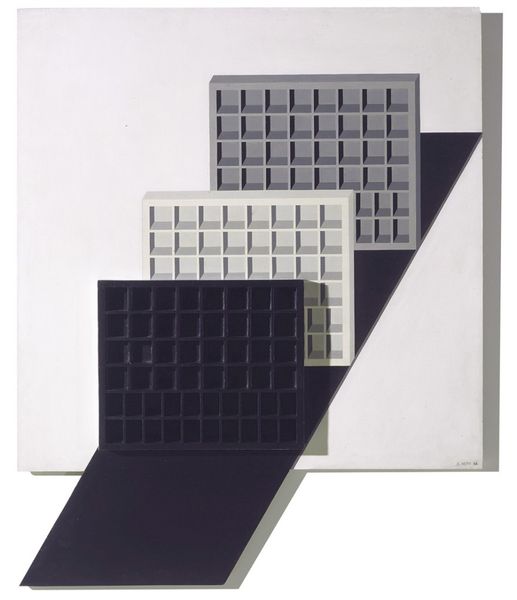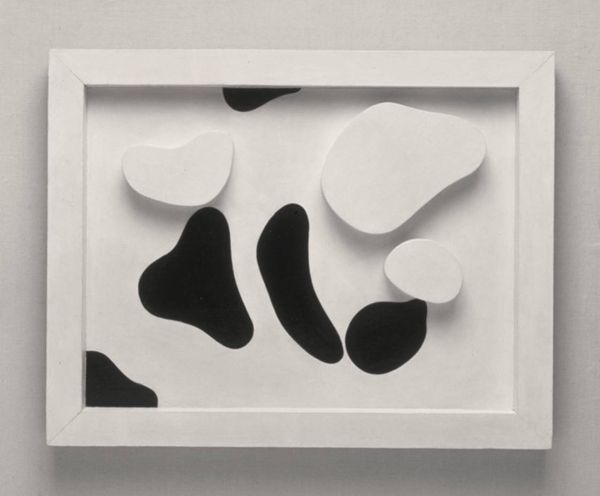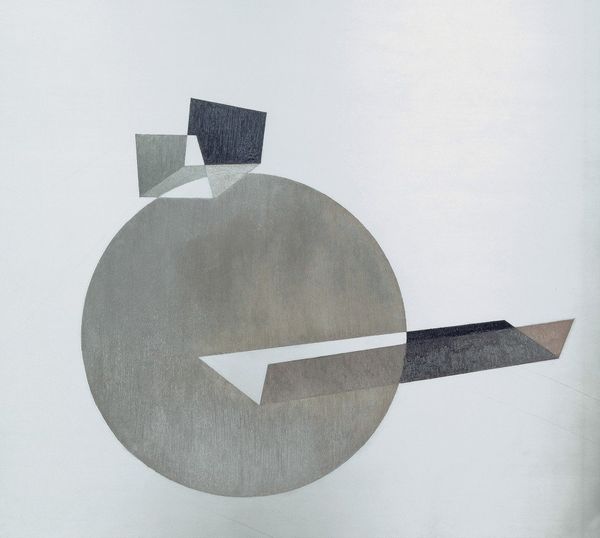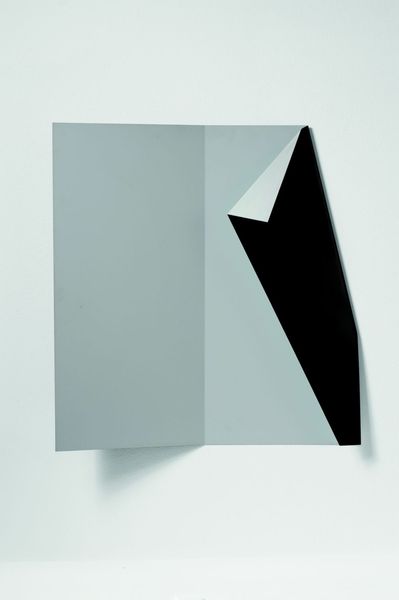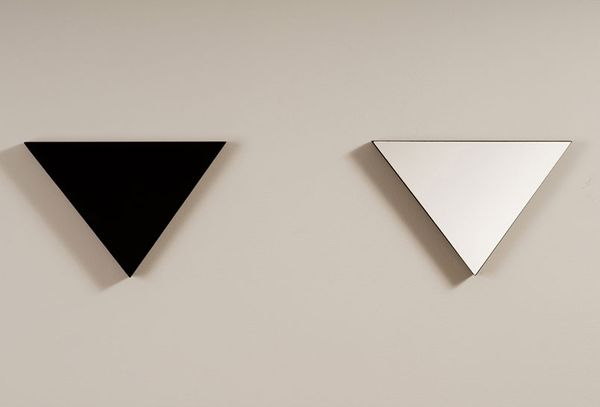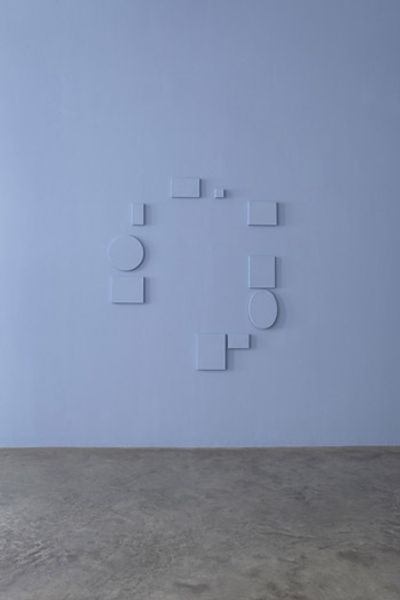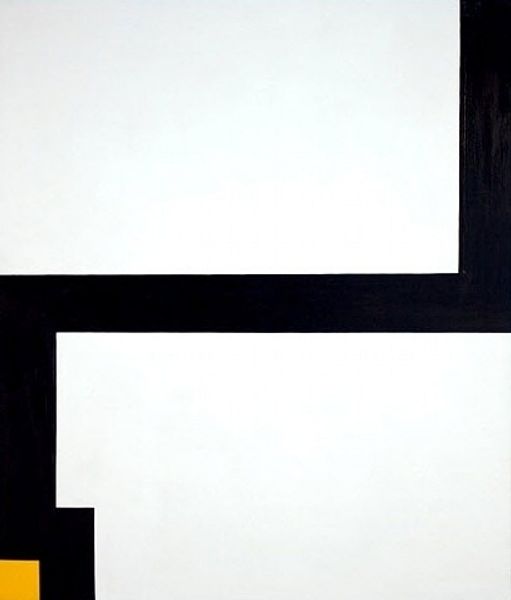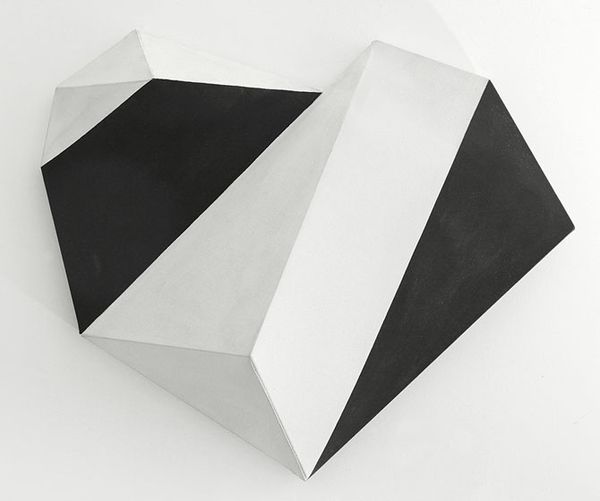
mixed-media, relief, acrylic-paint
#
mixed-media
#
minimalism
#
relief
#
acrylic-paint
#
geometric pattern
#
minimal pattern
#
geometric
#
abstraction
#
line
Copyright: Eduardo Nery,Fair Use
Curator: Eduardo Nery's "Oscilações do Claro Escuro I," created in 1967, offers a fascinating interplay of minimalist forms using mixed media. It's a relief, incorporating acrylic paint to build this pattern of shadow and light. What catches your eye first? Editor: It's so stark, almost architectural. The cubes, so perfectly white against the strong black shadows, it feels like a city viewed from above, doesn’t it? There's a powerful geometry, but it also feels unsettling, almost…clinical. Curator: I see what you mean. There’s a rigorous quality, but for me, the "Oscilações" – the oscillations – really come through. My eyes keep dancing, trying to decide if the blocks are floating or sinking, if the shadows are real or painted on. It's like a game of perception. Editor: And isn't that reflective of the anxieties of the era? Post-war, the cold war brewing – this stark, geometric art often acted as a refuge from chaos but also mirrored a sense of unease and the potential for societal fracture. It strips away anything organic, anything traditionally beautiful. Curator: Absolutely, and you're touching on a deeper point. The high contrast emphasizes that the world isn’t always as clear cut as we would like it to be. And with the slightly rough texture of the white cubes, it gives it this kind of raw, immediate presence. Editor: Right. There's this inherent critique of idealized forms; it refuses easy aesthetic satisfaction. These shadows, while defined, don’t give you much information—are they about industrial progress or an oblique commentary on social inequities hidden in plain sight? This era in art wrestled with portraying how power can cast long shadows, literally and metaphorically. Curator: Yes. But it’s also playing with positive and negative space, a kind of dance on the surface. And while there is certainly underlying anxiety in all of this art, I appreciate that Nery embraced, even highlighted it! I guess, at the end of the day, you simply cannot help but appreciate it. Editor: In the end, these carefully calibrated ambiguities give rise to thought-provoking commentary. That dialogue between precision and uncertainty makes for a compelling exploration of its time.
Comments
No comments
Be the first to comment and join the conversation on the ultimate creative platform.
